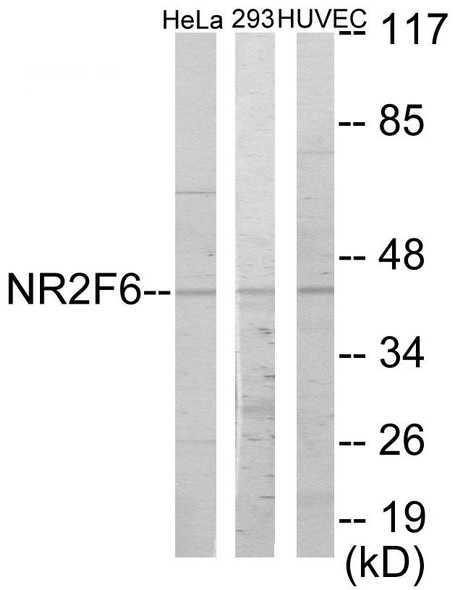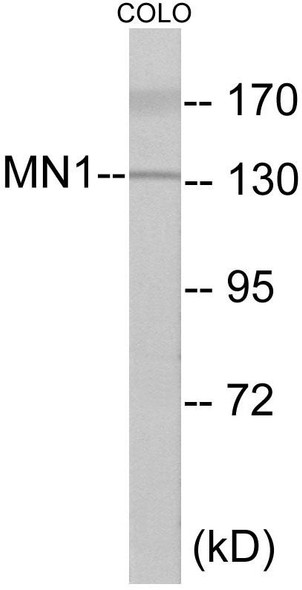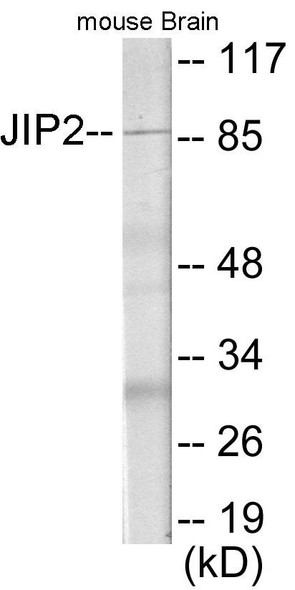Description
Dyskerin Colorimetric Cell-Based ELISA
The Dyskerin Colorimetric Cell-Based ELISA Kit offered by Assay Genie is a state-of-the-art assay designed for the quantitative detection of dyskerin levels in cell lysates or tissue samples. This kit provides excellent sensitivity and accuracy, ensuring precise and reliable results for your research needs.Dyskerin is a key protein involved in RNA modifications and telomerase function, playing a critical role in cellular processes such as cell growth, proliferation, and apoptosis. Dysregulation of dyskerin has been linked to various diseases, including cancer and rare genetic disorders, making it a valuable biomarker for studying these conditions and potential therapeutic targets.
With the Dyskerin Colorimetric Cell-Based ELISA Kit, researchers can easily and effectively measure dyskerin levels in a variety of sample types, enabling a deeper understanding of its role in disease pathogenesis and potential therapeutic interventions. Trust Assay Genie for high-quality, reliable assays for your research needs.
| Product Name: | Dyskerin Colorimetric Cell-Based ELISA |
| Product Code: | CBCAB00945 |
| ELISA Type: | Cell-Based |
| Target: | Dyskerin |
| Reactivity: | Human, Mouse, Rat |
| Dynamic Range: | > 5000 Cells |
| Detection Method: | Colorimetric 450 nmStorage/Stability:4°C/6 Months |
| Format: | 96-Well Microplate |
The Dyskerin Colorimetric Cell-Based ELISA Kit is a convenient, lysate-free, high throughput and sensitive assay kit that can detect Dyskerin protein expression profile in cells. The kit can be used for measuring the relative amounts of Dyskerin in cultured cells as well as screening for the effects that various treatments, inhibitors (ie siRNA or chemicals), or activators have on Dyskerin.
Qualitative determination of Dyskerin concentration is achieved by an indirect ELISA format. In essence, Dyskerin is captured by Dyskerin-specific primary antibodies while the HRP-conjugated secondary antibodies bind the Fc region of the primary antibody. Through this binding, the HRP enzyme conjugated to the secondary antibody can catalyze a colorimetric reaction upon substrate addition. Due to the qualitative nature of the Cell-Based ELISA, multiple normalization methods are needed:
| 1. | A monoclonal antibody specific for human GAPDH is included to serve as an internal positive control in normalizing the target absorbance values. |
| 2. | Following the colorimetric measurement of HRP activity via substrate addition, the Crystal Violet whole-cell staining method may be used to determine cell density. After staining, the results can be analysed by normalizing the absorbance values to cell amounts, by which the plating difference can be adjusted. |
| Database Information: | Gene ID: 1736, UniProt ID: O60832, OMIM: 300126, Unigene: Hs.4747 |
| Gene Symbol: | DKC1 |
| Sub Type: | None |
| UniProt Protein Function: | dyskerin: Isoform 1: Required for ribosome biogenesis and telomere maintenance. Probable catalytic subunit of H/ACA small nucleolar ribonucleoprotein (H/ACA snoRNP) complex, which catalyzes pseudouridylation of rRNA. This involves the isomerization of uridine such that the ribose is subsequently attached to C5, instead of the normal N1. Each rRNA can contain up to 100 pseudouridine ('psi') residues, which may serve to stabilize the conformation of rRNAs. Also required for correct processing or intranuclear trafficking of TERC, the RNA component of the telomerase reverse transcriptase (TERT) holoenzyme. Defects in DKC1 are a cause of dyskeratosis congenita X- linked recessive (XDKC). XDKC is a rare, progressive bone marrow failure syndrome characterized by the triad of reticulated skin hyperpigmentation, nail dystrophy, and mucosal leukoplakia. Early mortality is often associated with bone marrow failure, infections, fatal pulmonary complications, or malignancy. Defects in DKC1 are the cause of Hoyeraal-Hreidarsson syndrome (HHS). HHS is a multisystem disorder affecting males and is characterized by aplastic anemia, immunodeficiency, microcephaly, cerebellar hypoplasia, and growth retardation. Belongs to the pseudouridine synthase TruB family. 2 isoforms of the human protein are produced by alternative splicing. |
| UniProt Protein Details: | Protein type:Isomerase; EC 5.4.99.-; Nucleolus; Lyase; RNA-binding; RNA processing Chromosomal Location of Human Ortholog: Xq28 Cellular Component: cytoplasm; nucleolus; nucleoplasm; nucleus; telomerase holoenzyme complex Molecular Function:protein binding; pseudouridine synthase activity; RNA binding; telomerase activity Biological Process: box H/ACA snoRNA 3'-end processing; cell proliferation; positive regulation of telomerase activity; positive regulation of telomere maintenance via telomerase; RNA processing; rRNA processing; rRNA pseudouridine synthesis; snRNA pseudouridine synthesis; telomere maintenance; telomere maintenance via telomerase Disease: Dyskeratosis Congenita, X-linked |
| NCBI Summary: | This gene functions in two distinct complexes. It plays an active role in telomerase stabilization and maintenance, as well as recognition of snoRNAs containing H/ACA sequences which provides stability during biogenesis and assembly into H/ACA small nucleolar RNA ribonucleoproteins (snoRNPs). This gene is highly conserved and widely expressed, and may play additional roles in nucleo-cytoplasmic shuttling, DNA damage response, and cell adhesion. Mutations have been associated with X-linked dyskeratosis congenita. Alternative splicing results in multiple transcript variants. [provided by RefSeq, Jan 2014] |
| UniProt Code: | O60832 |
| NCBI GenInfo Identifier: | 3913488 |
| NCBI Gene ID: | 1736 |
| NCBI Accession: | O60832.3 |
| UniProt Secondary Accession: | O60832,O43845, Q96G67, Q9Y505, F5BSB3, |
| UniProt Related Accession: | O60832 |
| Molecular Weight: | 47,603 Da |
| NCBI Full Name: | H/ACA ribonucleoprotein complex subunit 4 |
| NCBI Synonym Full Names: | dyskerin pseudouridine synthase 1 |
| NCBI Official Symbol: | DKC1 |
| NCBI Official Synonym Symbols: | DKC; CBF5; DKCX; NAP57; NOLA4; XAP101 |
| NCBI Protein Information: | H/ACA ribonucleoprotein complex subunit 4 |
| UniProt Protein Name: | H/ACA ribonucleoprotein complex subunit 4 |
| UniProt Synonym Protein Names: | CBF5 homolog; Dyskerin; Nopp140-associated protein of 57 kDa; Nucleolar protein NAP57; Nucleolar protein family A member 4; snoRNP protein DKC1 |
| UniProt Gene Name: | DKC1 |
| UniProt Entry Name: | DKC1_HUMAN |
| Component | Quantity |
| 96-Well Cell Culture Clear-Bottom Microplate | 2 plates |
| 10X TBS | 24 mL |
| Quenching Buffer | 24 mL |
| Blocking Buffer | 50 mL |
| 15X Wash Buffer | 50 mL |
| Primary Antibody Diluent | 12 mL |
| 100x Anti-Phospho Target Antibody | 60 µL |
| 100x Anti-Target Antibody | 60 µL |
| Anti-GAPDH Antibody | 60 µL |
| HRP-Conjugated Anti-Rabbit IgG Antibody | 12 mL |
| HRP-Conjugated Anti-Mouse IgG Antibody | 12 mL |
| SDS Solution | 12 mL |
| Stop Solution | 24 mL |
| Ready-to-Use Substrate | 12 mL |
| Crystal Violet Solution | 12 mL |
| Adhesive Plate Seals | 2 seals |
The following materials and/or equipment are NOT provided in this kit but are necessary to successfully conduct the experiment:
- Microplate reader able to measure absorbance at 450 nm and/or 595 nm for Crystal Violet Cell Staining (Optional)
- Micropipettes with capability of measuring volumes ranging from 1 µL to 1 ml
- 37% formaldehyde (Sigma Cat# F-8775) or formaldehyde from other sources
- Squirt bottle, manifold dispenser, multichannel pipette reservoir or automated microplate washer
- Graph paper or computer software capable of generating or displaying logarithmic functions
- Absorbent papers or vacuum aspirator
- Test tubes or microfuge tubes capable of storing ≥1 ml
- Poly-L-Lysine (Sigma Cat# P4832 for suspension cells)
- Orbital shaker (optional)
- Deionized or sterile water
*Note: Protocols are specific to each batch/lot. For the correct instructions please follow the protocol included in your kit.
| Step | Procedure |
| 1. | Seed 200 µL of 20,000 adherent cells in culture medium in each well of a 96-well plate. The plates included in the kit are sterile and treated for cell culture. For suspension cells and loosely attached cells, coat the plates with 100 µL of 10 µg/ml Poly-L-Lysine (not included) to each well of a 96-well plate for 30 minutes at 37°C prior to adding cells. |
| 2. | Incubate the cells for overnight at 37°C, 5% CO2. |
| 3. | Treat the cells as desired. |
| 4. | Remove the cell culture medium and rinse with 200 µL of 1x TBS, twice. |
| 5. | Fix the cells by incubating with 100 µL of Fixing Solution for 20 minutes at room temperature. The 4% formaldehyde is used for adherent cells and 8% formaldehyde is used for suspension cells and loosely attached cells. |
| 6. | Remove the Fixing Solution and wash the plate 3 times with 200 µL 1x Wash Buffer for five minutes each time with gentle shaking on the orbital shaker. The plate can be stored at 4°C for a week. |
| 7. | Add 100 µL of Quenching Buffer and incubate for 20 minutes at room temperature. |
| 8. | Wash the plate 3 times with 1x Wash Buffer for 5 minutes each time. |
| 9. | Add 200 µL of Blocking Buffer and incubate for 1 hour at room temperature. |
| 10. | Wash 3 times with 200 µL of 1x Wash Buffer for 5 minutes each time. |
| 11. | Add 50 µL of 1x primary antibodies (Anti-Dyskerin Antibody and/or Anti-GAPDH Antibody) to the corresponding wells, cover with Parafilm and incubate for 16 hours (overnight) at 4°C. If the target expression is known to be high, incubate for 2 hours at room temperature. |
| 12. | Wash 3 times with 200 µL of 1x Wash Buffer for 5 minutes each time. |
| 13. | Add 50 µL of 1x secondary antibodies (HRP-Conjugated AntiRabbit IgG Antibody or HRP-Conjugated Anti-Mouse IgG Antibody) to corresponding wells and incubate for 1.5 hours at room temperature. |
| 14. | Wash 3 times with 200 µL of 1x Wash Buffer for 5 minutes each time. |
| 15. | Add 50 µL of Ready-to-Use Substrate to each well and incubate for 30 minutes at room temperature in the dark. |
| 16. | Add 50 µL of Stop Solution to each well and read OD at 450 nm immediately using the microplate reader. |
(Additional Crystal Violet staining may be performed if desired – details of this may be found in the kit technical manual.)






